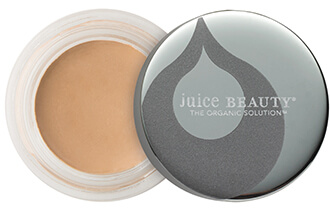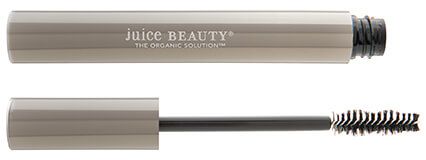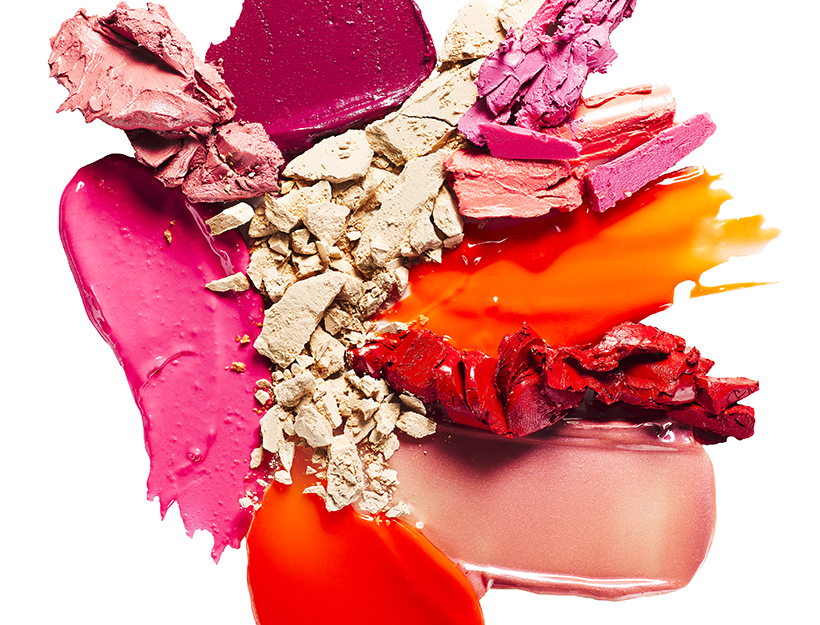
Nontoxic, Organic, (and Gorgeous) Pigments: What It Takes to Create Non-Toxic Makeup
From lead, to petroleum, to endocrine-disrupting plastics, the chemicals conventional makeup exposes us to seem beyond not-worth-it for a slightly darker mascara or a brighter shade of lipstick. But the math can look different when you’re about to go on a date with someone you really like, or a job interview, or you’re about to be photographed: The product that makes you look the best—and not necessarily the most made-up—is the one you you want. On the red carpet, movie sets, or magazine shoots, GP has been deeply familiar with this trade-off for her entire career. “Conventional beauty products have been the only option when you want a really black smoky eye, a perfect red lip, or a concealer that makes you look like you’re wearing no makeup and just happen to not have dark circles.” she says. “Natural pigments have traditionally not been terribly vibrant, bright, or dark, and the textures rarely rivaled those of the really luxurious conventional brands. You couldn’t get nontoxic makeup that didn’t involve some sort of trade-off in terms of color or texture.” When Juice Beauty approached GP about doing exactly that—she jumped at the chance.
But, technology, and a few cutting-edge cosmetic companies, are transforming natural makeup, taking the colors far beyond the dusty roses and neutral browns of the past—and the textures into the realm of the geniunely sheer, the truly shiny, the delicate and the subtle.
The new makeup line from Juice Beauty—which GP, as Creative Director, was intimately involved in developing—tackles both texture and color issues, delivering conventional-makeup quality in formulas that are totally nontoxic. “We used my favorite red carpet conventional products as benchmarks,” says GP. Reese, for example, is a deep, black-cherry lipgloss with patent-leather-level shine; the deep black mascara leaves lashes full, defined, and glossy; the concealer erases flaws but looks like you’re wearing nothing at all. “We wanted all of the ease, the drama, and quite frankly the sometimes-more-natural look and texture you can get from conventional makeup,” she says.
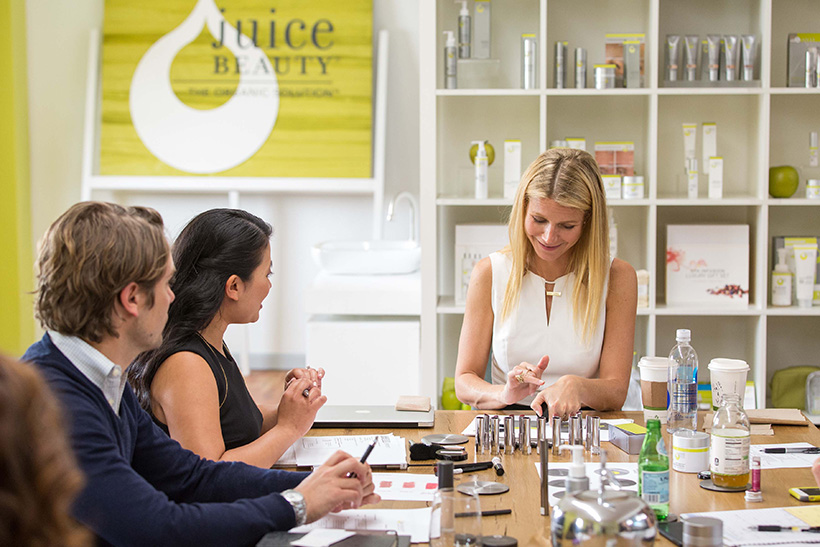
Skincare guru/CEO Tata Harper says that she finds color the biggest challenge in the natural-makeup space: “Getting the same vibrant shades is the main obstacle.” After considerable work and research, Harper’s lip-and-cheek tints ($35, goop.com) manage to be both sheer and bright.
Pigment isn’t just the most frustrating element in makeup formulas to do naturally; it’s also the most important in terms of toxicity.
“Artificial fragrances and synthetic dyes are some of the worst offenders—some can cause endocrine disruption, a known link to many types of cancers,”
says Juice Beauty CEO Karen Behnke. Such ingredients are often never tested for cosmetic toxicity at all, she notes: “We don’t believe artificial fragrances and synthetic dyes should be used in personal care products at all: Your skin can absorb what is placed on it.” Behnke points out that over the past several years, a number of dyes found to be carcinogenic have been banned from food, but the same regulations don’t apply to, say, lipstick (which, like it or not, the wearer does end up consuming). Lead, aluminum, cadmium (a groundwater contaminant that’s found in breast cancer tumors and known to be carcinogenic), and other heavy metals are regularly found in lipstick; the FDA doesn’t have a set limit on how much lead can be in a given lipstick, and its recent (2007, 2009, and 2012) studies actually show an increase in the amount of lead present.
Synthetic dyes and colors should be avoided completely, agrees Harper, who advises looking hard at ingredient lists. “Synthetic dyes and colors have names on the ingredient list that include FD&C, or D&C, usually with a number and letter following.” The Breast Cancer Research Fund has published numerous studies with top universities on this topic, Behnke notes.
When conventional cosmetics companies don’t resort to chemical dyes, they often use animal ingredients, primarily ground-up insects, for color. (This is a decidedly more natural and less-harmful-to-humans approach, but is unacceptable to most vegetarians, vegans, and animal rights activists for obvious reasons.) If you see “carmine” on a label, that’s ground-up beetles; “cochineal extracts” are also insect-derived, as are “Natural Red 4” and “E120.”
To create what’s called “carbon black”—used in mascara and eyeliner—companies combust heavy-duty petroleum products or coal; used in tires, inks, films, and plastics, carbon black is classified as possibly carcinogenic in humans and has been shown to be carcinogenic in animals, yet many women expose their eyes to this compound on a near-daily basis.
Years of research yielded new options in plant pigments and minerals, Behnke says, even for carbon black:
“Our alternative is a lot more expensive—and cleaner—than carbon black. Our chemists had to experiment over and over again to make sure the black color was holding in the natural pine resin (used instead of conventional, animal-derived glues), and pine resin isn’t exactly a “normal” ingredient for mascara so it’s all new for our scientists—or for any scientist.”
To create the line without polymers and film formers, silicones, animal-derived waxes, carbon black, synthetic nylon or rayon microfibers, parabens, triethanolamine, keratin (can be animal-derived), aluminum powders, petroleum glycols, retinal acrylates, cyclopentasiloxanes, and PEGS, the challenge lay in finding the right spectrum of pigments to “hold” within the formula and, Behnke adds, look amazing on the skin. The plant-derived phyto-pigments Juice was able to develop are extracted with carbon dioxide, and avoid the hexane or acetone that are usually required to extract vivid colors.
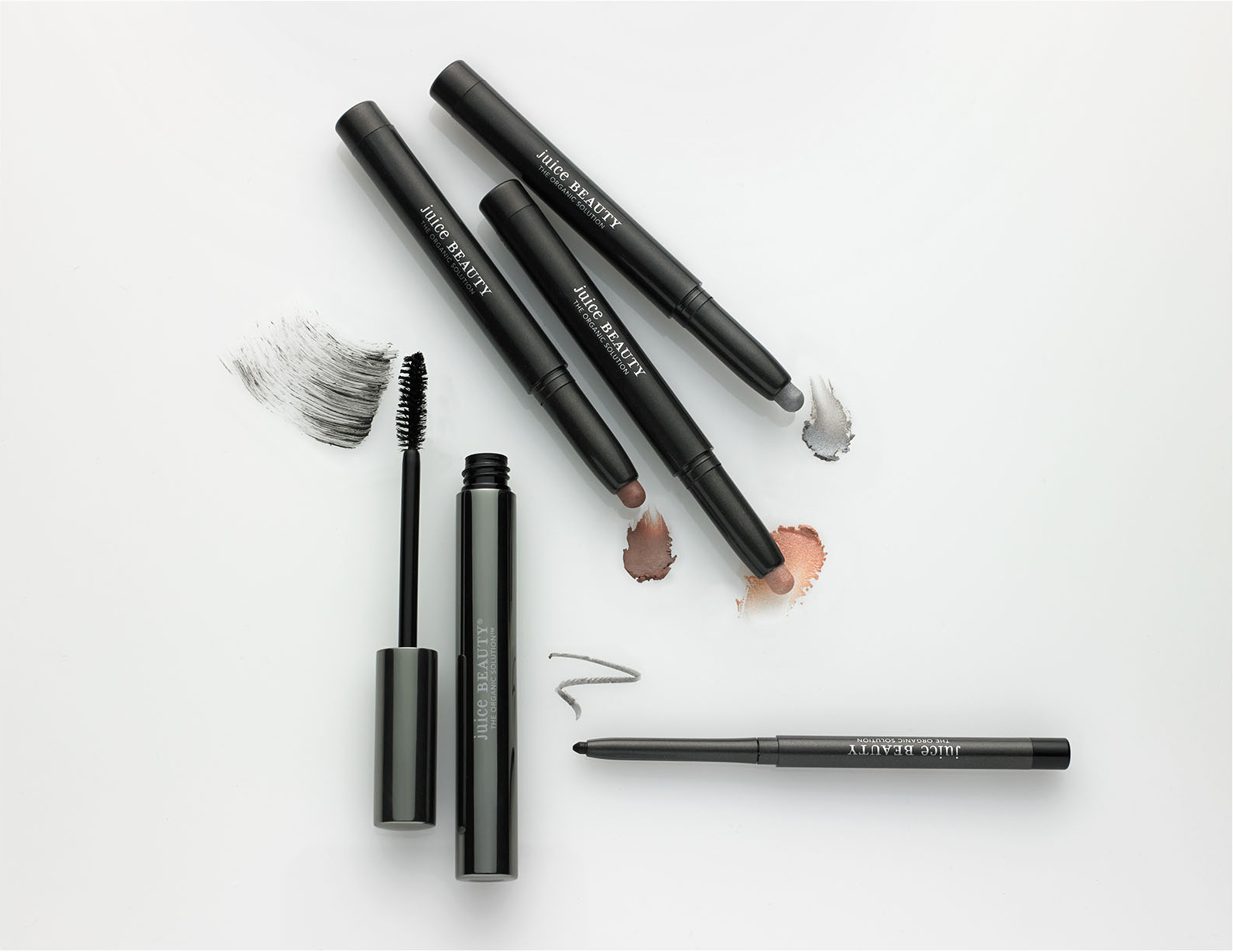
Re-engineering the formulas has benefits beyond simply being nontoxic, or organic, or vegan, says Behnke: “We used coconut alkanes to mimic the slip and feel of silicones, and made pressed powder with grape seed extracts instead of petroleum—not only for the more sustainable manufacturing process, but also because it delivers antioxidant, antiaging skincare benefits.”
The goal was always to meet the pigment, luxury, and efficacy of conventional chemical brands, Behnke continues—and it was a process that took five years of experimenting to achieve. Behnke says GP’s intensive involvement was critical: “We could not have produced this collection without Gwyneth’s intensive input over the last 14 months.”
The process began with working sessions analyzing clean formulas and healthful ingredients, then GP gave the team a conventional, chemical-makeup benchmark for every single product she hoped to create. “There were a lot of benefits to juggle,” says Behnke, “but we wanted to meet every one.” Lab samples and product briefs flew back and forth between LA and San Francisco (where Juice Beauty is based). The team met regularly as the collection took shape and the chemists started meeting and even exceeding the quality of the benchmarks. Behnke notes GP was particularly amazing at detecting even slight changes in the levels of plant waxes in the concealer, a product that’s notoriously hard to formulate: “At one point we brought a lab sample to her and she was really spending time with the application and turned to me and said, ‘Did you put more plant waxes in here? It’s a bit too waxy.’…and she was right.”
As the samples proliferated, GP tested them out with her makeup artists at red-carpet events, among them Leslie Lopez, Kira Nasrat, and Georgie Eisdell. She also tested them with friends (see the lip glosses named after some of them) and the team at goop. “It was a labor of love,” says Behnke. The result, GP says, is makeup she loves: “It’s beautiful, and it’s bright, and it’s clean. I use it every day for a super-natural look, and when I go out, I whip out the dramatic lipcolors and the black eyeliner. You have to try it to believe it—the proof is in the makeup bag and on your face.”
GP’s Makeup Bag
These are the products GP uses every day.
